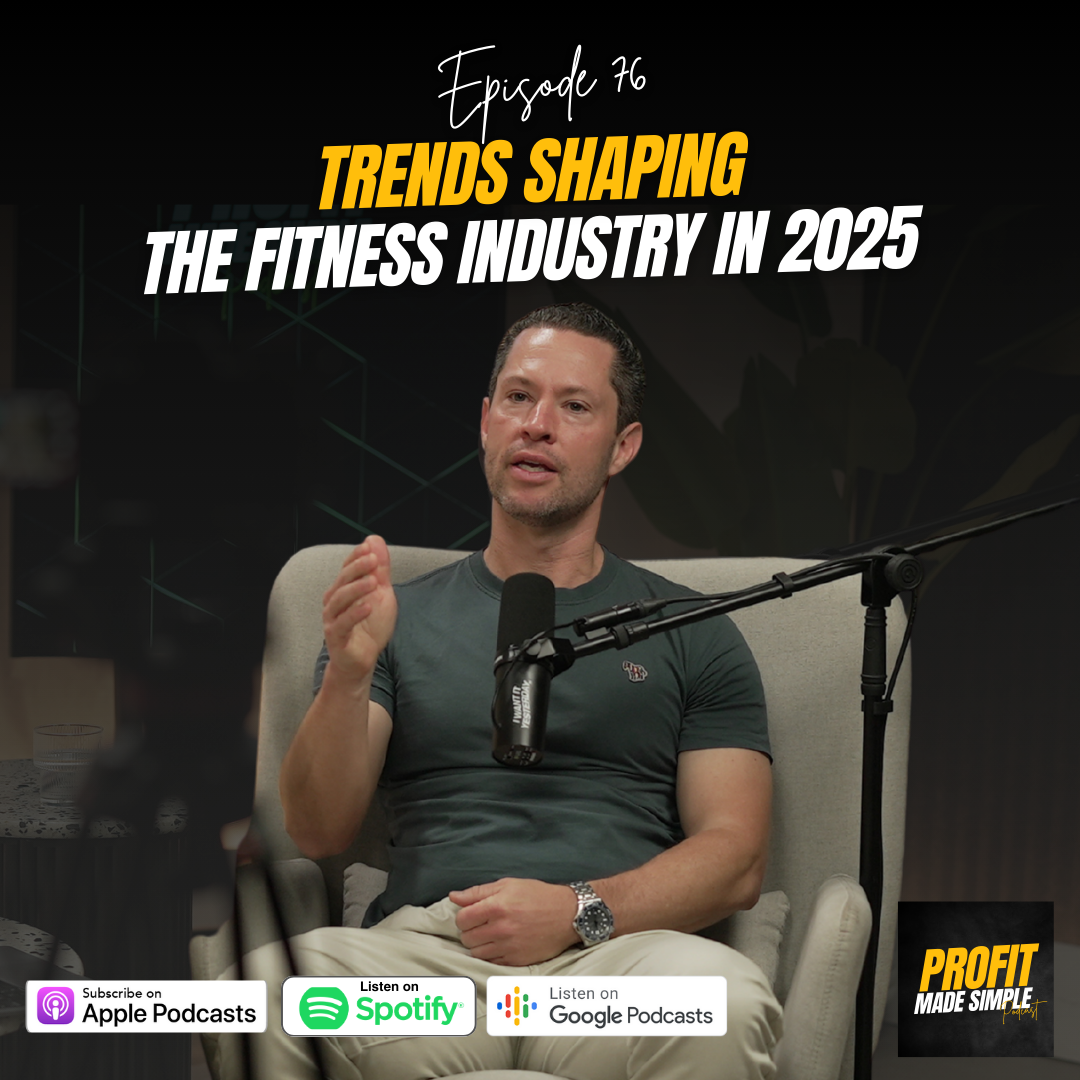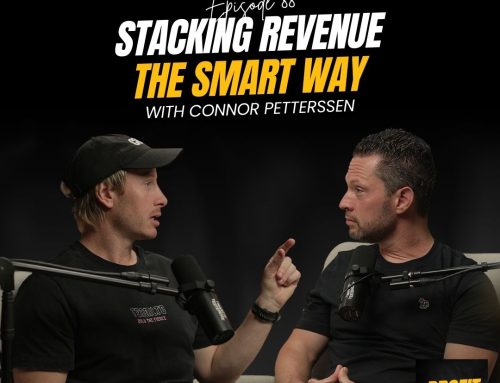The Future of Fitness in 2025: 5 Shifts Every Gym Owner Needs to Embrace
The fitness industry is dynamic, fast-moving, and constantly evolving. What worked five years ago simply won’t cut it today.
In fact, many gyms that were once thriving are now struggling, not because their owners lost passion, but because the market itself has fundamentally changed.
In this solo episode of Profit Made Simple, I shared the five biggest shifts shaping the future of fitness in 2025. These aren’t passing fads… They are long-term trends that will separate the gyms that thrive from those that fade away.
Here’s what you need to know.
1. Personalisation and Performance are the New Standard
Today’s clients don’t want to feel like just another number. They want experiences tailored to their preferences, abilities, and goals. If your business doesn’t create that sense of personalisation, they’ll find a competitor that does.
Performance-Driven Fitness
Two powerful examples leading this shift are:
- HYROX – The fastest-growing sport in the world. It’s more than just competition; it creates measurable performance goals, community, and accountability. While HYROX may not be a massive lead generator, it’s an incredible retention tool. Members who train towards structured events stay longer.
- The Running Boom – Marathons and fun runs are selling out months in advance, attracting record participation. This movement, driven strongly by Gen Z, is about shared purpose and social connection. Fitness businesses that introduce running clubs or encourage participation in events are positioning themselves for success.
Niche Personalisation
- The Menopause Movement – Women in perimenopause and menopause are actively seeking gyms that understand them. They want tailored programs, specialist coaching, and holistic approaches beyond just exercise.
- Gen Z Expectations – This generation values community, shared experiences, and wellness over partying and late nights. They expect fitness to be social, immersive, and purpose-driven.
The takeaway? Don’t try to be everything to everyone. Identify your niche and deliver deeply personalised, performance-focused experiences.
2. Building a Connected Brand Ecosystem
Consumers trust traditional fitness marketing less than ever. Thanks to overused guarantees, bait-and-switch challenges, and overpromises, our industry is in a trust recession.
So, how do you win back trust? By building genuine connections through multiple touchpoints.
The 7-11-4 Framework
According to Google’s research, for a prospect to trust you enough to make a significant investment, they need to:
- Spend 7 hours consuming your content
- Experience 11 different interactions with your brand
- Connect with you across 4 different platforms
This means your job isn’t just to “sell harder.” It’s to deliver value first:
- Record podcasts and long-form videos
- Repurpose into blogs, reels, and short clips
- Engage on email, socials, and in-person events
It’s no longer about shouting the loudest, it’s about building the deepest relationship.
3. Recovery and Wellness Have Become Essential
Ten years ago, the fitness industry was all about fat loss and muscle gain. Today, people want to feel good, reduce stress, and live healthier lives. That’s where recovery and wellness come in.
What Members Want
Searches for recovery services like ice baths, red light therapy, and breathwork are skyrocketing. But many small gyms make the mistake of investing hundreds of thousands of dollars in flashy recovery zones that don’t generate returns.
Instead, smart studios focus on:
- Adopting Recovery as a Core Value – Integrate decompression, breathwork, and recovery practices into your classes.
- Collaborations – Partner with local recovery practitioners or wellness centres for workshops and events.
- Simple, Cost-Effective Options – Recovery spaces don’t have to be expensive. Think massage guns, stretching zones, or even simple loungers that keep clients in your space longer.
The goal? Retention. Recovery isn’t just a revenue stream; it’s a strategy to keep clients engaged and committed for years.
4. AI as an Amplifier, Not a Replacement
Artificial intelligence won’t replace fitness professionals but it will amplify those who know how to use it.
Here are four practical ways gyms are using AI in 2025:
- Personalisation at Scale – AI tools can help design customised workout programs, nutrition plans, and progressions tailored to each client.
- Content Creation – Using the “10-80-10 Rule”: 10% your ideas, 80% AI drafting, 10% your refinement. This accelerates content while keeping it authentic.
- AI Chatbots and Call Agents – Automating follow-ups, booking leads, and nurturing prospects without burning out your team.
- AI Sales Coaching – Analysing recorded sales calls to provide structured feedback and help your team improve.
Gyms that leverage AI will save time, scale faster, and improve the client experience.
5. The Profit Per Member Model
Perhaps the most important shift: the traditional group training model is broken.
Five years ago, you could build a thriving gym with 200–250 members paying $60–70 per week. Today, competition is fierce, acquisition costs have tripled, and churn is brutal. Many gym owners feel stuck on a hamster wheel, endlessly chasing new sign-ups just to replace those leaving.
The solution? Shift to a Profit Per Member Model.
What This Looks Like
- Fewer members, but each paying more per week
- Multiple revenue layers: semi-private training, nutrition coaching, wellness and recovery services
- Long-term retention through deeper relationships and higher value delivery
Research shows that gyms offering layered services make 2–4 times more profit than traditional group training models. And studios with 150 premium members spending $100–200 per week are in the top 10% of fitness businesses globally.
The future isn’t about volume. It’s about value.
Final Thoughts
The fitness industry is shifting rapidly. What worked in 2019 won’t work in 2025. To stay ahead, you must:
- Deliver personalisation and performance-driven experiences
- Build a connected brand ecosystem to restore trust
- Embrace recovery and wellness as core offerings
- Use AI to amplify your impact
- Shift to the profit per member model
The gyms that adapt now will not just survive but thrive in the future of fitness.







Leave A Comment